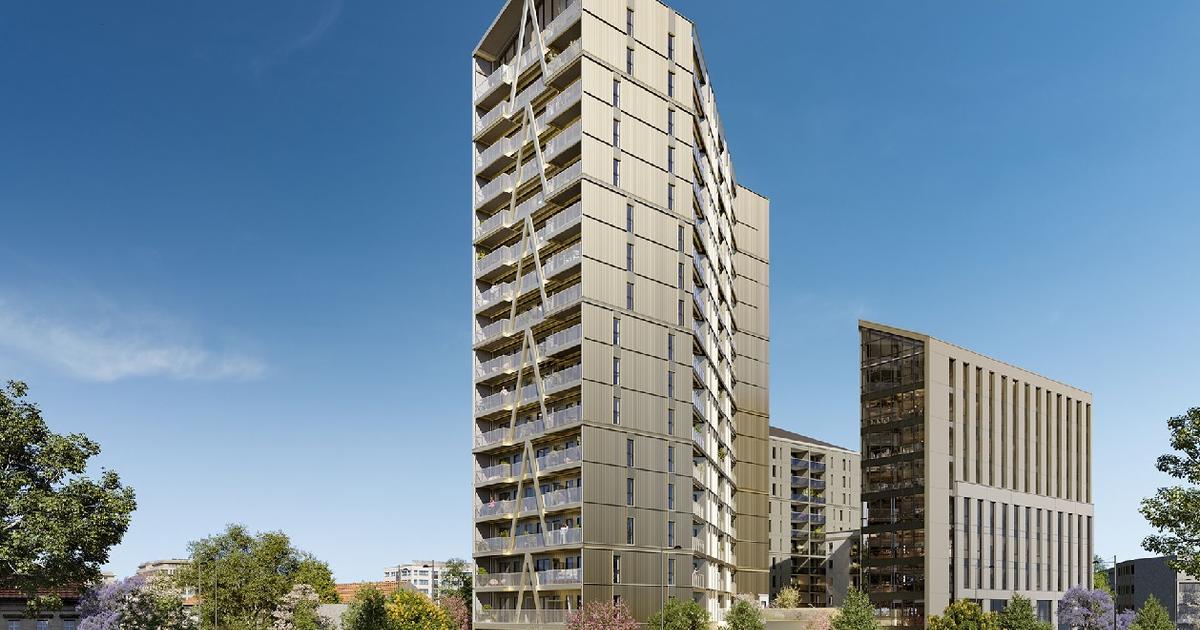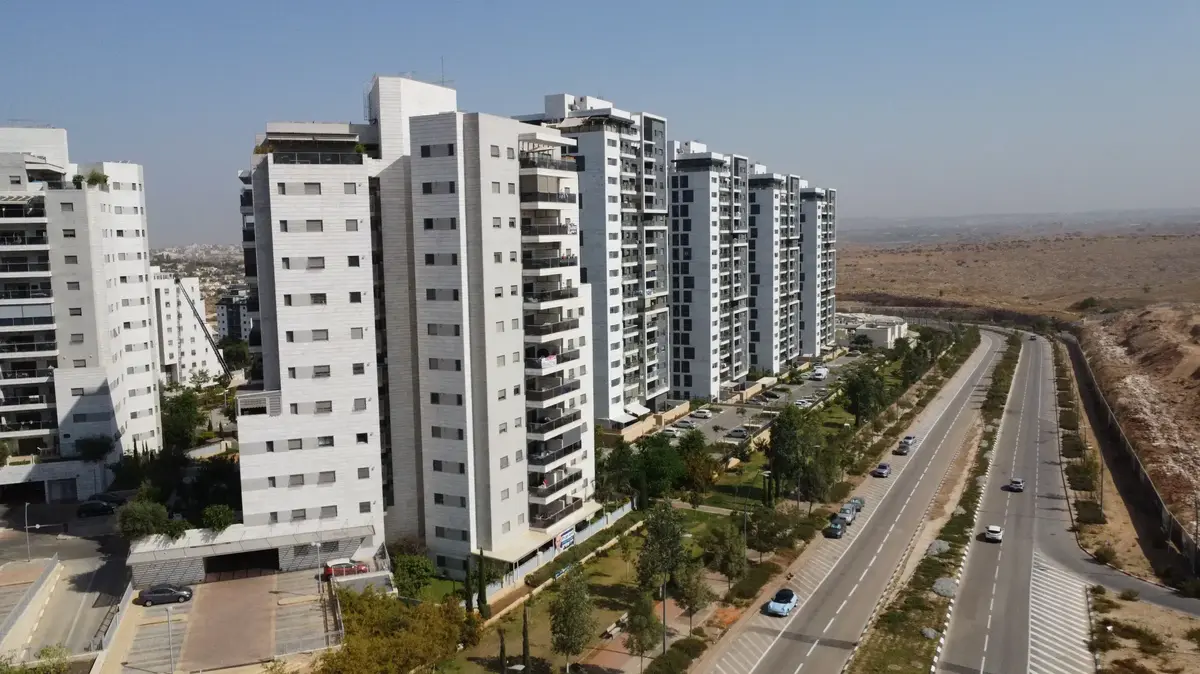The bamboo will replace the cement? The green construction that will protect the environment
The global cement industry produces about 4 billion tons a year and emits more carbon dioxide than India as a whole. At the same time, the use of wood in general and bamboo in particular as a building material is expanding. Is it really a successful environmentally and economically viable alternative to concrete?
The bamboo will replace the cement? The green construction that will protect the environment
angleIn 1935, Nathan Alterman wrote "We'll Complete Your Concrete and Cement" and since then these words have become a symbol of the ongoing tension in Israel between the need for urban and economic development and the protection of the natural environment. Today, concrete and cement are the major drivers of greenhouse gas emissions and today's climate crisis, but the solution to the problem may come from nature itself.
Hamlet State
Concrete is the most common building material in the world. The global cement industry produces about 4 billion tonnes a year and emits more carbon dioxide than India. It produces about 7 percent of greenhouse gas emissions (if it were a country, it would be in third place just after China and the US).
Cement production is also an intense water consumer and contributes to airborne particulate pollution. Concrete - produced from mixing cement, water, sand and gravel - contributes to the urban heat islands, empowers surface runoff to flood, prevents soil water absorption, and harms biodiversity. Sand mining for construction is a problematic issue, both because the world's sand reserves are consumable and because mining is mostly controlled by the underworld.
The use of cement is rising at the same time as economic activity: In the beginning of the decade, China used more cement in three years than the United States in the entire 20th century. This over-development has contributed greatly to the country's environmental problems. World population growth and acceleration of urbanization will increase the demand for concrete by 20 percent by 2030 and with it also the emissions and pollution that are in it.
More in Walla! NEWS More in Walla! NEWSThis way you can invest smartly in an age of changing climate
To the full articleMore in Walla! NEWS
The dream of a villa with a garden: why the planning bodies oppose them and where they still build them in the center from malls to purchase tax: 10 important real estate judgments this year in the end of the pirate "flying" parking lot in Kfar Truman: its owners were obliged to return the land to the state there is a solution to the platform - Free demo for the innovative invention of promoted contentErect lean buildings
There are several ways to reduce the various damages that cement creates: it can be reduced by design, it can be combined with vegetation (Grasscrete), especially in paving, it is also possible to develop alternative cement (modern cement, known as Portland cement, has not changed much since 19th century and now have innovative technologies and products with lower environmental seal). Another way is to recycle waste types into cement-substitute powder (coal ash is currently used and so is Ferrock, a blend of shredded scrap from the steel industry along with silica and other materials).
However, the most promising replacement seems to be the most familiar material: wood. In the 1990s, reclaimed timber (CLT) was developed in Austria, which has many advantages: it is light, inexpensive, durable (even in a fire and earthquake), fast to application, does not require the use of steel for stabilization, and is safer for the workforce. It is easier to renovate or redesign apartments and wooden buildings, and it can be recycled when the building is finished or transformed into biofuel used for biological fertilizers. As the tree grows it absorbs carbon dioxide and emissions in production are low, so the overall emissions of the product are probably negative. A report by the UK Climate Change Commission in 2018 estimated that replacing wood with concrete was the way to achieve the largest carbon reduction in the construction industry.
"Ecological construction is a process of optimization between dozens of parameters that sometimes have a conflict between some," says architect Yossi Corrie, owner of the Geotactoka office and a green building expert. "The green standards encourage a healthy mix of local, recycled and renewable materials. The construction industry is not yet there to realize the potential of renewable materials and the main reason for this is a lack of awareness and conservatism in the field. In my experience, these are ideal Formal flexibility, and they require a low amount of materials and are therefore lightweight. "
More in Walla! NEWS More in Walla! NEWSNot just water transporters: How much are the rivers in Israel worth?
To the full articleBamboo (Photo: shutterstock)
Bamboo (Photo: ShutterStock)
Complete bamboo
Despite all its positive qualities, it should be borne in mind that bamboo builders may not necessarily grow everywhereAnother plant that is becoming a leader in building materials is the bamboo, a herbaceous plant whose fibers have been used for light and temporary construction (like barracks) for thousands of years and now it seems that it can also be used for more massive construction. Without proper treatment, bamboo is a combustible material that is biodegradable in weather or eaten by insects. On the other hand, its fibers are very strong, it is light, flexible and durable, and current tests show that it is safe to use as a substitute for familiar materials.
Some 1,400 bamboo species are recognized: only some are suitable for construction, but all have similar advantages. Bamboo grove has many ecological benefits - from relatively high oxygen production to soil erosion prevention. Best of all in the context of sustainability: Unlike forests, bamboo plantation reaches adulthood in a few years and is rapidly replenishing (one of the bamboo species holds a Guinness peak for plant growth: 4 inches per hour). Unlike many agricultural crops, bamboo needs few inputs to thrive, especially in areas where it grows naturally. These areas (of tropical or sub-tropical climate) are also exactly where significant urban population growth is expected.
On the aesthetic level, bamboo allows architectural thinking not related to straight surfaces of concrete and steel, but more organic. Recently, a Swiss company has also developed dedicated timber boards from a blend of bamboo coarse and vegetable glue that allow the construction of straight surfaces.
"As the field of construction, the thinking will be circular and holistic thinking, while understanding the life cycle of the materials and components, the importance of using wood from logging or bamboo licensed forests and, later, also dedicated wood structure systems," says Corey. "An ecological solution can be found for any budgetary framework and combine recycling and renewable materials. Using bamboo and recycled plastic composites saves long-term maintenance. And increases the phenomenon of heat islands. " Using a balanced mix of 20-10 percent of renewable materials, 20-10 percent of recycled materials, and 20-10 percent of local materials, is the first step in moving the construction market into a more sustainable route. It's a recommendation that can be made on any project and on any budget. "
Finally, in spite of all its positive qualities, it should be borne in mind that bamboo builders may not necessarily grow everywhere. Increasing the demand for its raw material would require its transportation (mainly from Asia and South America) and perhaps suppress natural areas for the benefit of the crop (as happened with soy and sugarcane). In addition, further research and development is needed to ensure long-term durability in terms of decades.
The article was prepared by "Angle - Science and Environment News Agency"









